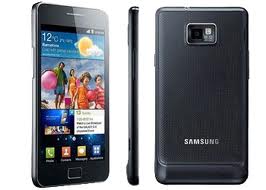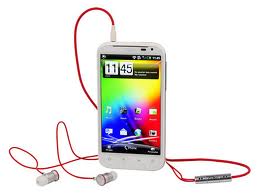Last week, we shared with you our top 10 smartphones on a Php10k budget. Today, we’re kicking it up a notch with our list of 10 smartphones that fit a Php20k budget. Check out our list to see which ones made it.
Among the handsets in our list, around two are fairly new, one or two more have not been officially released in the Philippines while the rest are 6 months old or older.
The mid-range phone market (Php20k an below) seems to be dominated by flagship handsets that have depreciated in time rather than new entrants that were purposely positioned in this category.
Note: Phones are listed from highly to least recommended in a descending order (like always, prices are based on online sellers/grey market and the cheapest mall prices we’re able to find).
1. Samsung Galaxy Nexus (Php17,000 – Php28,900)

Best for people who: Want the latest Android OS updates without having to wait too long, if you want the clean Vanilla Android experience.
Not for people who: Are not ‘techy’ or unfamiliar with the technicality of stock Android OS — mostly if you’re migrating from iOS, hate the phone’s bland styling.
Pros: Very fast and fluid UI, Android 4.1 Jellybean, firmware updates are received directly from Google, no bloatware, zero shutter lag, 720p Super AMOLED HD screen, good sound quality, NFC.
Cons: Slightly outdated processor, 5MP camera, average battery life, stock Android UI can be confusing to some, poor in-call noise cancelling, bland exterior, no storage expansion slot, requires MHL adapter for HDMI output.
2. Sony Xperia S (Php19,300 – Php28,000)

Best for people who: Want a stylish, fast, user-friendly Android smartphone with lots of media capabilities and a great main camera to boot.
Not for people who: Hate big phones, flashy design, hate Sony’s software support.
Pros: Fast 1.5 GHz dual core processor, user-friendly UI, sleek and stylish, HD 720p LCD screen, great 12.1MP main camera, smooth full HD videos, extensive multimedia capabilities, unified PlayStation and Sony Smart TV integration, HDMI out.
Cons: Touch-sensitive hardware buttons are a pain to use, longer than most phones with 4.3″ screens, still on Gingerbread (ICS update soon), limited support for video formats, built-in battery, no storage expansion slot.
3. Samsung Galaxy S2 (Php18,900 – Php23,200)

Best for people who: Are performance freaks, love flashing different ROMs, accustomed to TouchWiz UI, great camera, love playing games, want a thin smartphone.
Not for people who: Are audiophiles, seek for high resolution displays, hate to frequently plug-in their phones.
Pros: Dual core Exynos 4210 is still a a great performer, unlocked bootloader, Super AMOLED screen, very thin profile, user friendly, 8MP camera takes great photos, loud speakerphone, great call quality, expandable storage.
Cons: Meager battery life, gets hot easily, poor sound quality output (from the 3.5mm audio jack), requires MHL adapter for HDMI output, low resolution.
4. HTC Titan (Php18,700 – Php23,800)

Best for people who: Crave for HTC’s solid build quality, a phone that’s running Windows Phone 7.5 (mango) with an amazing 4.7″ Super LCD screen and astonishing battery life.
Not for people who: Hate Microsoft, not a big fan of WP7, hate HTC’s familiar design motif and hate a ‘heavier-than-average’ phone.
Pros: Solid, zippy UI and highly optimized OS, reat look and feel, large screen size, great camera, great battery life, good call quality and radio reception, loud speakerphone, XBOX and Windows PC integration.
Cons: Phone’s internal hardware is ‘so last-gen’, display has a disappointing 800×480 resolution, no microSD expansion slot, hazy Windows Phone 8 upgrade path.
5. Motorola Droid Razr (Php19,500 – Php25,400)

Best for people who: Love Motorola’s solid build quality in an ultra-thin and stylish smartphone without sacrificing performance and usability.
Not for people who: Are road warriors, want removable battery, picky with display resolution, heavy users or have small hands.
Pros: Insanely thin, stylish, sturdy, adequately fast TI OMAP 4430 processor, ICS update is very close to stock Android, expandable storage.
Cons: Low-resolution pentile-matrix display, non user-replaceable battery, short-average battery life, average 8MP camera quality, thick display border width — makes it hard to grasp for people with small hands.
6. Nokia Lumia 800 (Php17,600 – Php19,700)

Best for people who: Long for the nostalgic Nokia experience. Want a simple and easy to use smartphone with an impressively durable build quality.
Not for people who: Are not a fan of the Microsoft-Nokia partnership, hate low-resolution displays, hate the WP7’s tiled UI.
Pros: Top-notch build quality, sturdy polycarbonate body shell, fast and very responsive OS, good camera, ClearBlack AMOLED display, unified XBOX and Windows integration experience, average-good battery life.
Cons: Low resolution display, last-gen single core 1.4GHz Scorpion CPU, lacks storage expansion option, not upgradeable to Windows Phone 8, built-in battery is not user-replaceable.
7. HTC Sensation XL (Php19,300 – Php23,500)

Best for people who: Feel at home with the Sense UI, want a zippy Android smartphone and great sound quality thanks to the bundled Beats earphones.
Not for people who: Think the ‘Beats’ branding is a gimmick, hate HTC Sense and are not fans of low resolution S-LCD screens.
Pros: Bundled Beats Tour earphones, Beats Audio, HTC build quality, 1.5GHz dual-core CPU, big 4.7 inch S-LCD display, good camera, roomy 16GB internal storage.
Cons: Paltry battery life, low resolution 800×480 display, aging Snapdragon CPU, Sense UI is bogged down with useless animations, no storage expansion.
8. Galaxy S Advance (Php17,800 – Php19,300)

Best for people who: Want a no-frills, dual core smartphone that can run some of the latest games while bearing the TouchWiz UI and got most of the basics covered.
Not for people who: Think that benchmarks and processor branding is more important than the phone’s most basic functions.
Pros: Super AMOLED display, 1GHz dual core CPU, Mali 400 GPU, smooth performance, good battery life, expandable storage.
Cons: Dumbed-down version of the Galaxy S2, no ICS update yet, cheap plasticky build, bland exterior styling, so-so camera performance, design does not stand out from other budget Samsung Galaxy models.
9. Blackberry Bold 9790 (Php16,000 – Php21,100)

Best for people who: Are not fans of on-screen keyboards, like cheap internet packages and want the closest experience to owning the Bold 9900 without breaking the bank.
Not for people who: Hate Blackberry’s fully QWERTY keyboard, love playing movies, apps and games on their phones.
Pros: Tactile full QWERTY keyboard, zippy UI, great battery life, cheap internet plans, BBM, high resolution touchscreen display, light and compact, highly secure Blackberry 7.1 OS
Cons: Severely outdated OS, App World lackluster compared to Google Play an iOS App Store, tiny 2.45″ display, antiquated hardware, poor 5MP camera, no HD video recording.
10. LG Optimus 2X (Php14,500 – Php19,000)

Best for people who: Want to play Tegra-exclusive games and watch movies on an HDTV easily from a phone that has a great screen and affordable price tag.
Not for people who: Are picky with UI lags, hate low resolution and crave for timely software support.
Pros: Tegra 2 processor is still capable, Tegra-optimized games, IPS LCD boasts accurate colors and good viewing angles, good 8MP camera, mini HDMI out port.
Cons: very delayed firmware updates, still no ICS, poor battery life, poorly optimized firmware, only 512MB RAM.
Quite a number of figures indicated above were taken from listings in popular online stores. Just be aware that some of the prices indicated only comes with shop warranty and not manufacturer’s warranty.
As for our favorite device among the lot, Galaxy Nexus gets a few points more since Google has already promised roll-out of Android Jelly to this handset — making its performance more “buttery”. We cannot say the same with the others on this list (expect around 6 months before they get a Jelly Bean update).
We hope our list helped you a lot in choosing where to spend your hard-earned money.
Editor’s Note: Original story and reaserch by Kevin with additional inputs and edits from Abe.
The post Top 10 Smartphones on a Php20,000 budget appeared first on YugaTech | Philippines, Tech News & Reviews.
